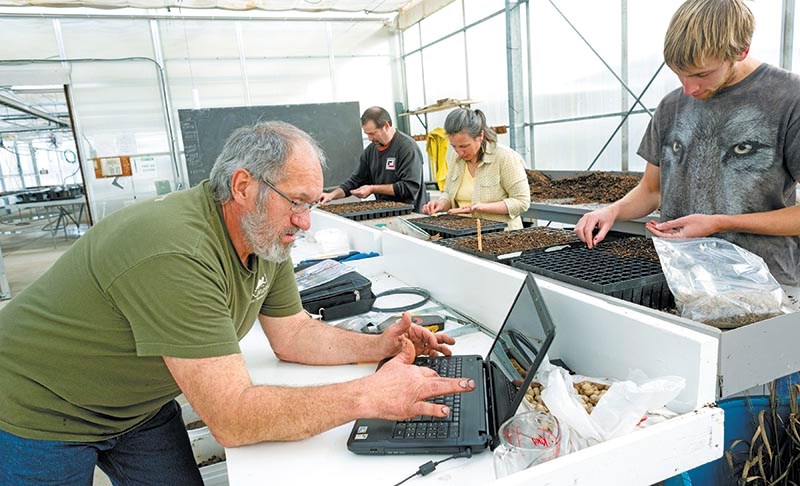In a greenhouse at Lambton College a team of volunteers is planting a giant crop of weeds.
Goldenrod, milkweed, thistle – plants that Ontarians have been trying to eradicate for decades are being seeded, watered and nurtured with tender loving care.
What’s junk to one person is treasure to another, and to a group of naturalists restoring Sarnia’s native flora one plant at a time, these aren’t weeds, they’re the future.
“Native plants have a bond, a link, with all of our wildlife here,” says Larry Cornelis, of Return the Environment.
“Ecologists don’t know all the connections yet but we do know they’re fundamentally important.”
Take native oak trees, for example. The trees growing here naturally play host to 500 different kinds of butterflies and moths, Cornelis said.
“Plant an English oak, you get none.”
Cornelis and his partner in Return the Landscape, Shawn McKnight, are both award-winning environmentalists who are working with more than 100 volunteers to collect and propagate wild seed. This year’s crop involves 100 species of native perennials.
Recently, Ontario dropped milkweed from its list of noxious weeds because it’s critical to butterflies, especially Monarchs. The group is growing thousands of them in four varieties.
And thistles, the prickly things that most gardeners hate. Turns out they provide food for pollinators, large seeds for hungry birds and fluffy nesting material for goldfinches.
Gardeners often say they want a hardy perennial that flowers for a long time. Well, plant goldenrod, says Cornelis. And no, it doesn’t cause hay fever; that’s ragweed.
“You could lie on your back and I could smack you with the flowerhead of goldenrod and it wouldn’t bother you.”
When European settlers arrived in Sarnia 200 years ago they began ripping out the plants and trees that grew here and replacing them with food crops and ornamentals.
The vanishing act continues today as residents take advantage of Sarnia’s climate to grow colourful and exotic flowers and shrubs.
That hubris comes at a price, Cornelis says.
“The evolutionary link is so important to our environment. And look at what we’re doing, we’re converting it to plants from all over the world.”
The fruits of their labour can already be seen in Canatara Park, where several areas have gone native. And butterfly gardens and other projects are taking root at numerous city schools, including Rosedale, Lansdowne, Cathcart and King George VI.
Self-sufficiency is the ultimate goal of the seed rescue program, which is currently supported by a third Ontario Trillium Foundation grant.
Already, the demand for locally sourced Lambton County stock is growing among conservation and stewardship groups, First Nations and even many homeowners.
“I think this will really grow into something bigger,” Cornelis said. “Native plants are the foundation of health ecosystems and a healthy environment for all of us.”
- George Mathewson
